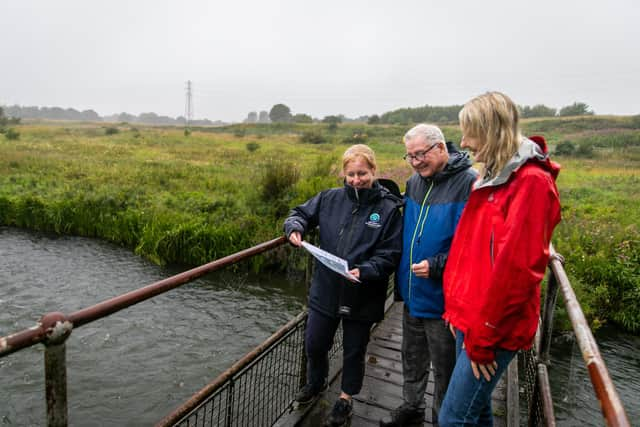Milestone as phase one of River Leven restoration work set to get underway
and live on Freeview channel 276
The project aims to to improve a two and a half mile stretch of the river flowing from Cameron Bridge to Leven for the benefit of local people and wildlife, including making it easier for fish to move up and down stream of the Burn Mill and Kirkland Dams to breed and thrive.
Phase one will soon be delivered on the north shore around the new Cameron Bridge Station and Duniface Crossing point - known locally as Swaines Bridge - in collaboration with the Levenmouth Rail Link project.
Advertisement
Hide AdAdvertisement
Hide AdAlison Wilson, north team leader and manager on the project, said: “As part of these improvements, locals will see the creation of shallow, ponded areas that help promote much needed wet woodland habitat, the addition of some large wood along the riverbanks which encourages natural process and provides shelter and habitats for invertebrates, fish and birds and planting of a range of native trees and wetland plants.


“With any project like this the area may look muddy and stark to begin with until nature takes over and the plants and new habitat have time to develop. The improvements all go towards helping the river function more naturally and create new, important habitats for local wildlife including fish.”
The River Leven flows 29 miles from Loch Leven into the Firth of Forth, and to this day continues to support businesses to deliver products and create jobs. However, historic modifications as a result of industry that are no longer used have impacted on the way it functions and place this natural resource under pressure.
Hannah Swanson, Leven Programme manager, added: “Once an economic powerhouse and industrial vein, it’s our vision to showcase the River Leven once more for the benefit of local communities. Multiple organisations have come together to develop ambitious plans over the last few years, and work beginning on the ground to restore the River Leven is an exciting step forward.”
Advertisement
Hide AdAdvertisement
Hide AdWhere practical, the Restoring the River Leven project is looking to allow the river to work more naturally within its very urban setting. This requires finding a balance between physical constraints such as railways, bridges and pipelines with the desire to regenerate a more natural environment and to remove or adapt some of the more historic infrastructure that is no longer used. This work, and that at other locations across Fife, is only made possible as the result of funding from the SEPA Water Environment Fund, without which this work would not be possible.
Working with the Rail Link project will help minimise any disruption to the local community during the works phase and ensure work is coordinated with no impact on the Rail Link project timelines. This partnership working has also enabled opportunities for material and compound reuse between the projects helping reduce cost and carbon footprint.
Councillor Colin Davidson, convener of Fife Council’s Levenmouth Area Committee, said: “It’s great to see work about to start on site and it will make a real difference.”